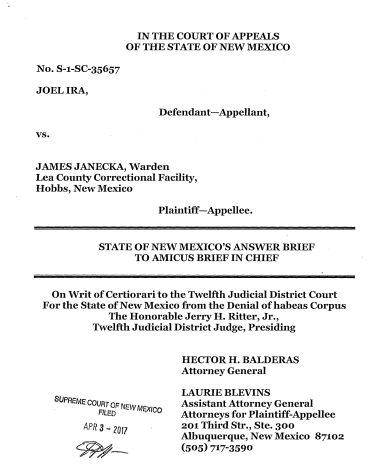
Summary of Argument
The State does not deny the Amicus Brief statement that, at least generally, "children are categorically less deserving of the harshest forms of punishment." [BIC 3] To do so would run counter to decades of Supreme Courtauthorityandcommonlyheldsocietalbeliefs. AlthoughbothBriefs- in-Chief imply that this principle is somehow new, ushered in by Roper v.Simmons, 543 U.S. 551 (2005), Miller v. Alabama, 132 S.Ct. 2455 (2012), and Graham v. Florida, 560 U.S. 48 (2010); in fact the Supreme Court has long recognized the relevance of age and background in sentencing matters.
Rather than create any new standard, the more recent cases simply expanded on the older ones, re-defining the parameters for sentencing juvenile offenders as adults. Roper increased the threshold age for the imposition of the death penalty from 16 to 18 years for homicide, while Kennedy v. Louisiana, 554 U.S. 407 (2008) abolished the death penalty altogether for non-homicide crimes. Miller determined that, in a homicide case, an individualized sentencing hearing is required before the imposition of any life sentence without parole; and finally, Graham established a categorical ban against a life sentence without parole for a single, non- homicide offense. All these opinions reflect a continuing judicial commitment, whenever possible, to the rehabilitative goal embedded in our juvenile system, but the cases require only the recognition that juveniles are generally less culpable than adults and more capable of change. The State, Petitioner and Amicus have spent a great deal of time analyzing what these cases held, but it bears discussing now what these cases did not hold.
Miller did not hold that a life sentence without parole for a homicide is unconstitutional. Graham did not hold that a non-homicide offender must be released within his lifetime. Mostly importantly, Graham did not prohibit the imposition of an aggregated sentence for multiple, non- homicide crimes. The Miller opinion did note that "given all we have said in Roper, Graham, and this decision about children's diminished culpability and heightened capacity for change, we think appropriate occasions for sentencing juveniles to th[ese] harshest possible penalt[ies] will be uncommon." Miller, 132 S.Ct. at 2469. However, all of these decisions left open the possibility that some juvenile offenders, if incapable of change, should and might spend the greater part of their lives behind bars. Petitioner is such an offender.
Amicus, however, assumes that Graham_ applies to an aggregated punishment for multiple crimes and, inextricably intertwined with that proposition, argues that a lengthy aggregated sentence, although comprised of consecutively imposed legal sentences, nonetheless constitutes a de facto life sentence without parole. Then she argues that such a de facto sentence does not afford Petitioner a meaningful opportunity for parole and thus violates the Eighth Amendment proscription against cruel and unusual punishment.
None of these assertions, however, is accurate. The State submits that Graham does not apply to aggregated sentences at all, such that nothing requires this Court to provide any opportunity for parole; although Petitioner does, in fact, have the ability to seek release after 45 years. Additionally, even if this Court chooses to apply Graham to aggregated sentences, the Supreme Court has never defined the phrase "meaningful opportunity" for parole. This Court remains free, should it wish, to affirm Petitioner's sentence as constitutional, despite all the briefs' unsupported generalizations and the claim that new developments in science warrant reconsideration of Petitioner's sentences.